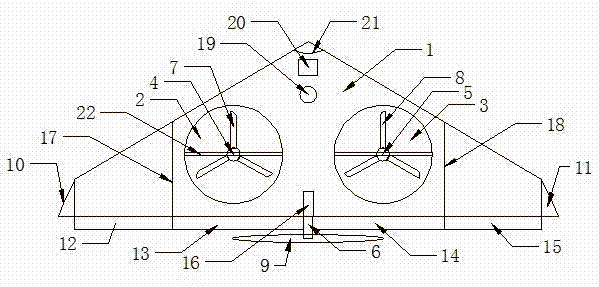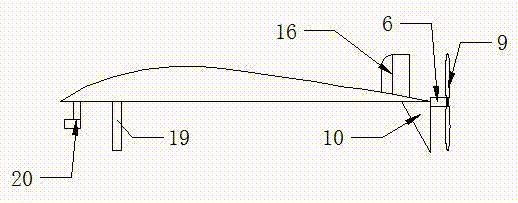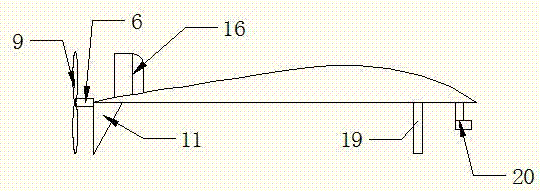Flying wing type double-duct vertical taking-off and landing aircraft
A technology for vertical take-off and landing and aircraft, which is applied in the aviation field, can solve the problems of fixed-wing aircraft not being able to take off and land vertically, fixed-wing aircraft with slow flight speed and low flight efficiency, and achieves increased power, strong practicability and high flight efficiency. Effect
- Summary
- Abstract
- Description
- Claims
- Application Information
AI Technical Summary
Problems solved by technology
Method used
Image
Examples
Embodiment Construction
[0019] The present invention will be further described below in conjunction with the accompanying drawings.
[0020] The utility model relates to a flying-wing double-duct aircraft capable of vertical take-off and landing. Such as Figure 1 , which mainly consists of five parts. The first part is the fuselage 1, the second part is the No. 1 ducted engine 4, the No. 2 ducted engine 5 and the rear engine 6, the third part is the vertical stabilizer 16, the No. 1 horizontal stabilizer 12, the No. 2 horizontal stabilizer 13, No. 3 horizontal stabilizer 14, No. 4 horizontal stabilizer 15, No. 1 winglet 10, No. 2 winglet 11. Such as figure 2 As shown, the fourth part is a support rod 19, and the fifth part is an external pan / tilt and camera or photoelectric sensor 20.
[0021] Such as figure 1 As shown, the fuselage 1 is a flying wing type, which is an isosceles triangle from a top view. The fuselage 1 is foldable, and the No. 1 folding line 17 and the No. 2 folding line 18 ar...
PUM
 Login to View More
Login to View More Abstract
Description
Claims
Application Information
 Login to View More
Login to View More - R&D
- Intellectual Property
- Life Sciences
- Materials
- Tech Scout
- Unparalleled Data Quality
- Higher Quality Content
- 60% Fewer Hallucinations
Browse by: Latest US Patents, China's latest patents, Technical Efficacy Thesaurus, Application Domain, Technology Topic, Popular Technical Reports.
© 2025 PatSnap. All rights reserved.Legal|Privacy policy|Modern Slavery Act Transparency Statement|Sitemap|About US| Contact US: help@patsnap.com



